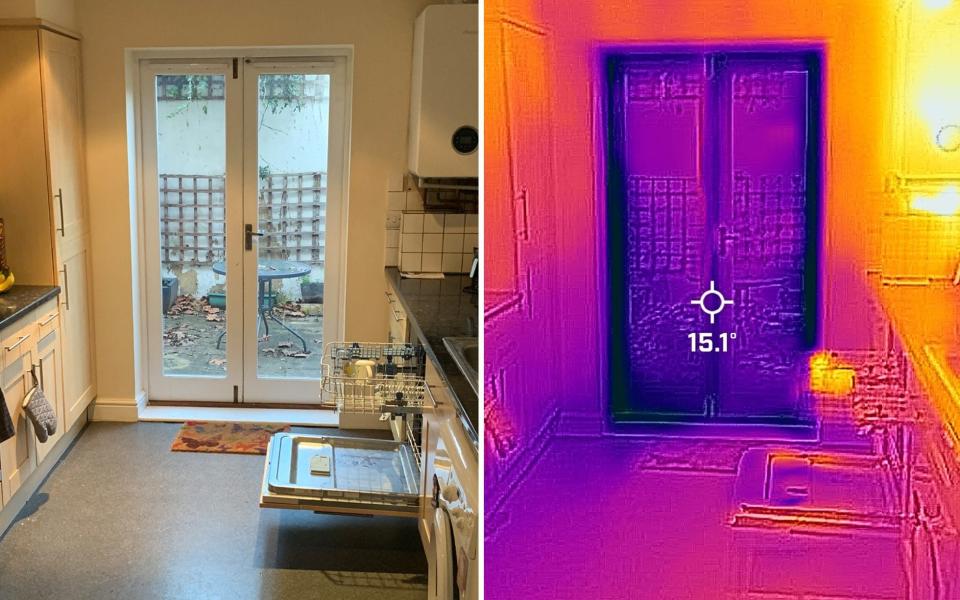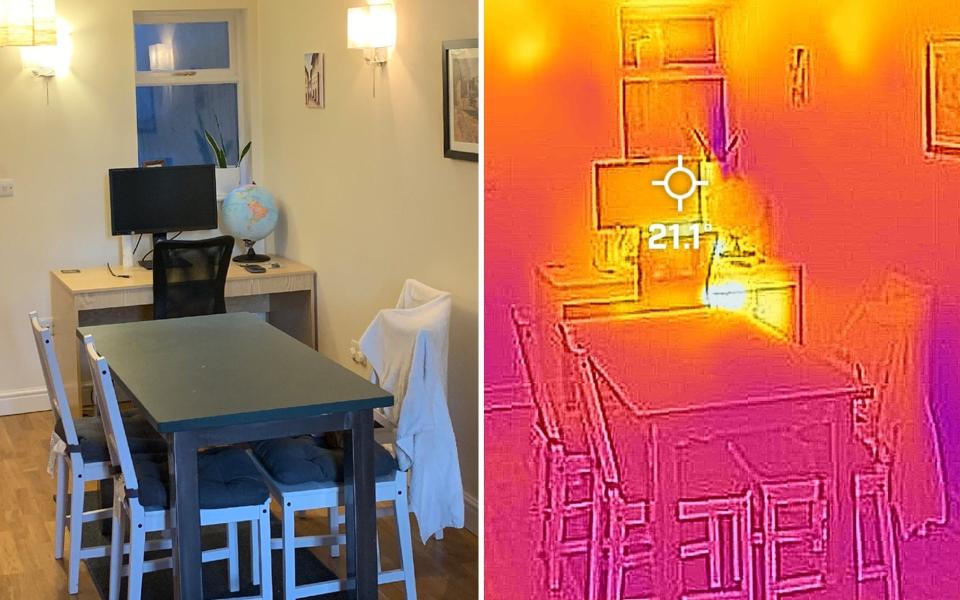‘I used a thermal camera to assess the energy efficiency of my home – and the results shocked me’

Energy efficiency is, like, so in right now. But like most people of my “Gen Z” cohort, I have never seen a draught excluder in real life, and like most people in Britain, the idea of conserving energy wasn’t very high on my priority list until recently, when energy bills shot above £2,500 and temperatures plummeted below 0C.
For homeowners, the energy crisis has prompted a rethink of their relationship with energy – and some have invested heavily in maximising their property’s efficiency by throwing cash at cavity insulation, solar panels, and heat pumps.
I have a problem though: I live in rented accommodation, so any decisions about eco-home renovations are not mine to make, but my landlord’s.
A glance at the housing market tells me the current crisis isn’t ending anytime soon, with annual energy bills for the average home projected to hover around £2,000 for years to come.
With major home upgrades out of the question, I’m left wondering what I can do to cut costs. It dawns on me that if I want to save money, I need to exclude some draughts.
Paralysed by where to start with this project, I enlisted the help of providers Octopus Energy, who sent me a £500 thermal imaging camera. Their helpful team said it would help detect where there was money to be saved – and the results shocked me.
Bedroom
My energy odyssey started at around seven o’clock in the morning. I figured this was early enough for decent lighting, and would also show how well the house was keeping in heat while the radiators were on as I got ready for work.
My camera will show which areas in the room are warmest in bright pleasant yellows, while the draughtier or less well-insulated bits will show up in scary dark purples and blues. The average temperature in my room was a stable 18C, with the recently vacated bed visibly warmer.
My first indication that my landlord might not share my desire for a highly energy efficient home hit me when I looked at the bedroom window. Not only was it a dark purple (read: very cold), the space on the wall below was practically badly affected.

Phil Steele, Octopus’s resident future technology evangelist and efficiency guru, tells me this might be the result of a lack of insulation put around the outside of the window. He encourages me to tell the landlord to correct the faulty insulation, assuming it had been done recently, or demand it be replaced entirely.
Elsewhere in the boudoir, I am told the wall joining us to the house next door is “severely lacking in cavity wall insulation, as the camera is showing loads of purple squares”. I could have told you the wall wasn’t very well insulated the first time I heard our neighbours blasting Lewis Capaldi songs six o’clock in the morning.
Bathroom
My bathroom is without a radiator, yet I must open the windows to ward off the mould. The mould comes anyway, so the bathroom is both mouly and cold.
Octopus’s thermal camera tells me that yes, it is very cold outside, and opening the window is a bad idea. The air seeping into the bathroom is dropping it to a chilly 8C, while the rest of the space, fresh from a morning shower, is practically on fire.

Sash windows are a bit difficult to draught-proof, Steele explains, as the way they slide open means cold air can still get in through a gap. Conscious that I do not own this property, he suggests I get a gapseal, “a reusable product that lets you plug the gap between the window and saves renters from causing permanent damage”. I promptly add one to my Amazon basket, along with some mould spray.
Hallway
The hallway in our house is baltic, no two ways about it – and I am not shocked when I point the thermal camera at our front door and find it looks like a very tall ice cube. That ominous purple is practically flooding in from beneath the door, dropping the temperature to 13C.
Acknowledging how foreboding the door is, Steele says: “Get an insulated draught excluder for the bottom of the door and a letterbox brush cover to keep the cold out. If that doesn’t work, it may be worth checking if the door should be replaced.”

I picture myself telling my landlord to replace his front door on the basis that it’s “too purple” and instead measure the bottom of it so I can start buying draught excluders like a good, well-behaved tennant.
Kitchen
When it comes to the kitchen it's more bad news. “The patio door here is just as bad as the front door, with poor seals and bad quality wood,” Steele says. “It’s also not clear if there is a seal where the two doors meet as a lot of cold air is coming between them.”
He suggests more draught excluders, or, more drastically, a heavy curtain and fresh sealant. I picture my landlord paying for this, as pigs fly in perfect formation overhead.

More reasonably, Steele suggests our boiler might be running too hot. According to Nesta, a thermostat provider, households can shave as much as £112 a year off bills by dropping a boiler’s flow temperature from 55C-60C to 50C. I make a mental note to Google how to do this later.
Living room
Leaving aside the slightly awkward towel drying on the chairs, most of the faults with the living space are of my own making and not my landlord's, it turns out. For one, the sofa is too close to the wall-mounted radiator, which Steele tells me traps the heat from making its way to the rest of the room.
He also lets me know that the curtains “are letting a lot of cold air from the windows in”, but my houseplants need their light so this advice will be ignored, at least while the sun is out. In the evening, though, Steele recommends tucking curtains behind the radiator, although given they are floor-length I am not sure how possible this is in practice.

I had a lot of fun playing with my very expensive toy – and would recommend anyone who owns their own property give it a whirl. Octopus has been loaning them out since last year, but they are so popular the scheme is currently closed. There is a waiting list for 2023, however.
Depressingly though, few of the problems thrown up by the thermal images were ones I could solve myself, bar a few draught excluders. All the DIY hacks in the world aren’t a substitute for decent insulation or a draught-proof front door.
It begs the question of whether I turn the images over to my landlord, hoping this may spur crucial upgrades to improve the energy efficiency of the property, or keep quiet – in case my dream for a more efficient home is fulfilled, but leads to an increase in my rent.

 Yahoo Movies
Yahoo Movies 